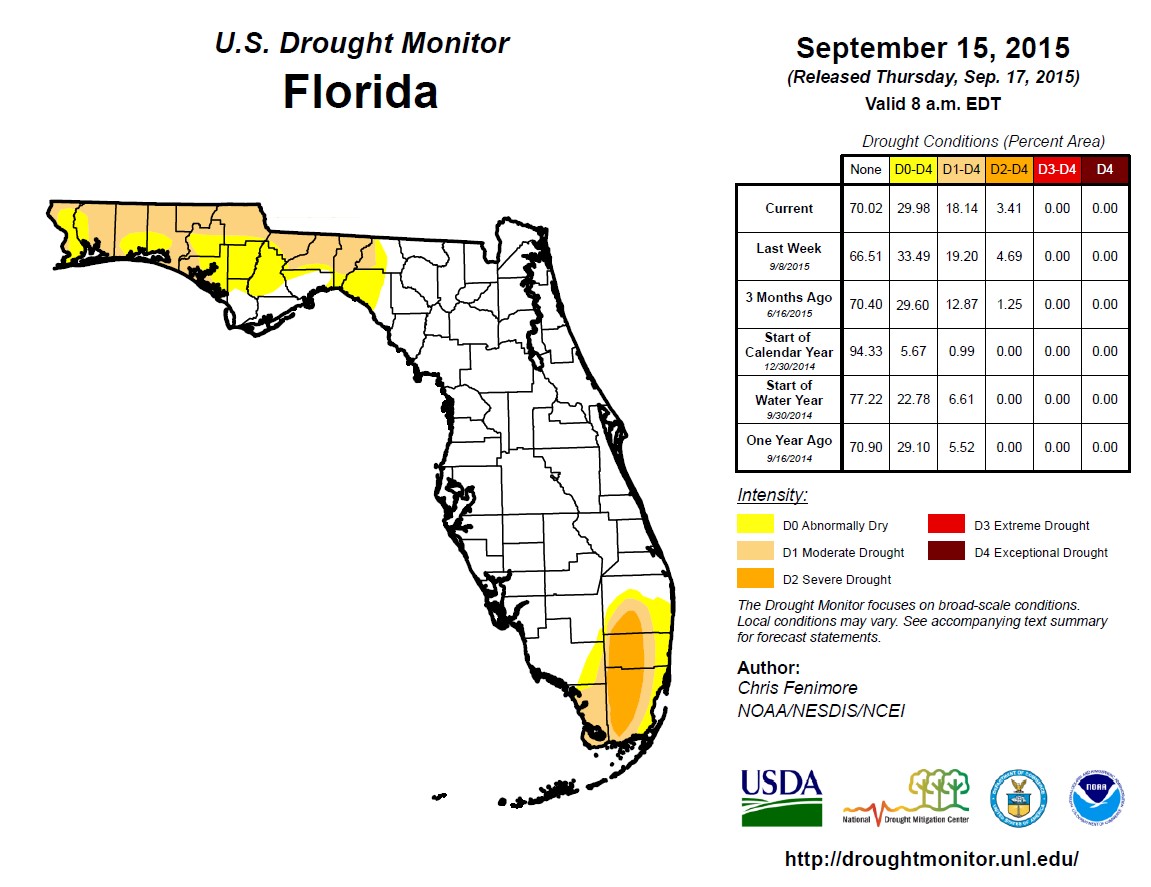Nicolas DiLorenzo and Tessa Schulmeister, University of Florida NFREC, Marianna Florida
Around this time of year as days begin to shorten, we are reminded that the time is approaching when we need to think about our beef cattle winter feeding strategy. You may have heard many times from us at the University of Florida about the benefits of grazing winter annuals in this part of the state. North Florida’s winter temperatures allow for a longer growing season of some highly nutritious forage resources. However, the majority of beef producers in the Panhandle do not have access to irrigated pastures to grow winter forages, and they are then left at the mercy of the weather, hoping for rain to sustain good pasture growth.
If you follow the climate news you may have heard that El Nino may bring us a rainy winter, which may be good for winter grazing, unless, as predicted in some forecasts, the moisture is excessive. In terms of having a successful winter grazing season, however, the problem is not the winter moisture but rather moisture levels in the fall when we are planting winter annuals. If we look at moisture conditions for this week in the Florida Panhandle (Fig. 1), the majority of the area is “abnormally dry” or in “moderate drought.” If this does not change soon, the planting of winter forage under dryland conditions (majority of producers) may be delayed, which can have implications in overall productivity.

Years like this one remind us that we need to always be looking for new alternatives in terms of feed resources to develop a cost-effective winter feeding program for beef cattle. Efforts are underway to determine the potential of a new oilseed crop called Brassica carinata in Florida. B. carinata, commonly called Ethiopian mustard or simply “carinata,” is a close relative of canola, and has the potential of providing a winter oilseed crop during a time when row crop farmers that do not have cattle, would usually plant a cover crop. More information about the production of this new oilseed can be found in the EDIS document entitled “Carinata Production in Florida.”
One of the unique characteristics of carinata oil is that its fatty acid profile makes it ideal for the production of jet bio-fuel. Currently the University of Florida is involved in a research project to study all the aspects of carinata production, harvesting, and processing for use as a bio-fuel, including the use of the byproduct of the oil extraction as a cattle supplement.
As with many other oilseed crops, the residue after extracting the oil, which comprises approximately 40% of the seed weight, is high in protein and can have potential as cattle feed. The byproduct called carinata meal can be dried and pelleted, and with a protein content of approximately 43% (DM basis), can be an excellent supplement to balance beef cattle winter diets based on bermudagrass or bahiagrass hay.
To test the potential of carinata meal as a cattle supplement, a study was designed at NFREC over 2 consecutive years, in which weaned heifers (~600 lb of of initial body weight (BW)) were placed in two treatments over a 70-day period: 1) receiving only bahiagrass hay, or 2) bahiagrass hay plus B. carinata meal pellets supplemented at 0.3% of the heifers’ BW every day for the entire 70-day period. Figure 2 shows the average daily gain (ADG) of the heifers under each of the treatments. We observed (Fig 2) a difference in ADG of 0.43 lb/d in favor of the carinata meal supplemented heifers, which translates to a total of 30 lb of extra beef per animal at the end of the 70-day feeding period. This extra weight, at today’s cattle prices, equates to $64.5 per head in added value.